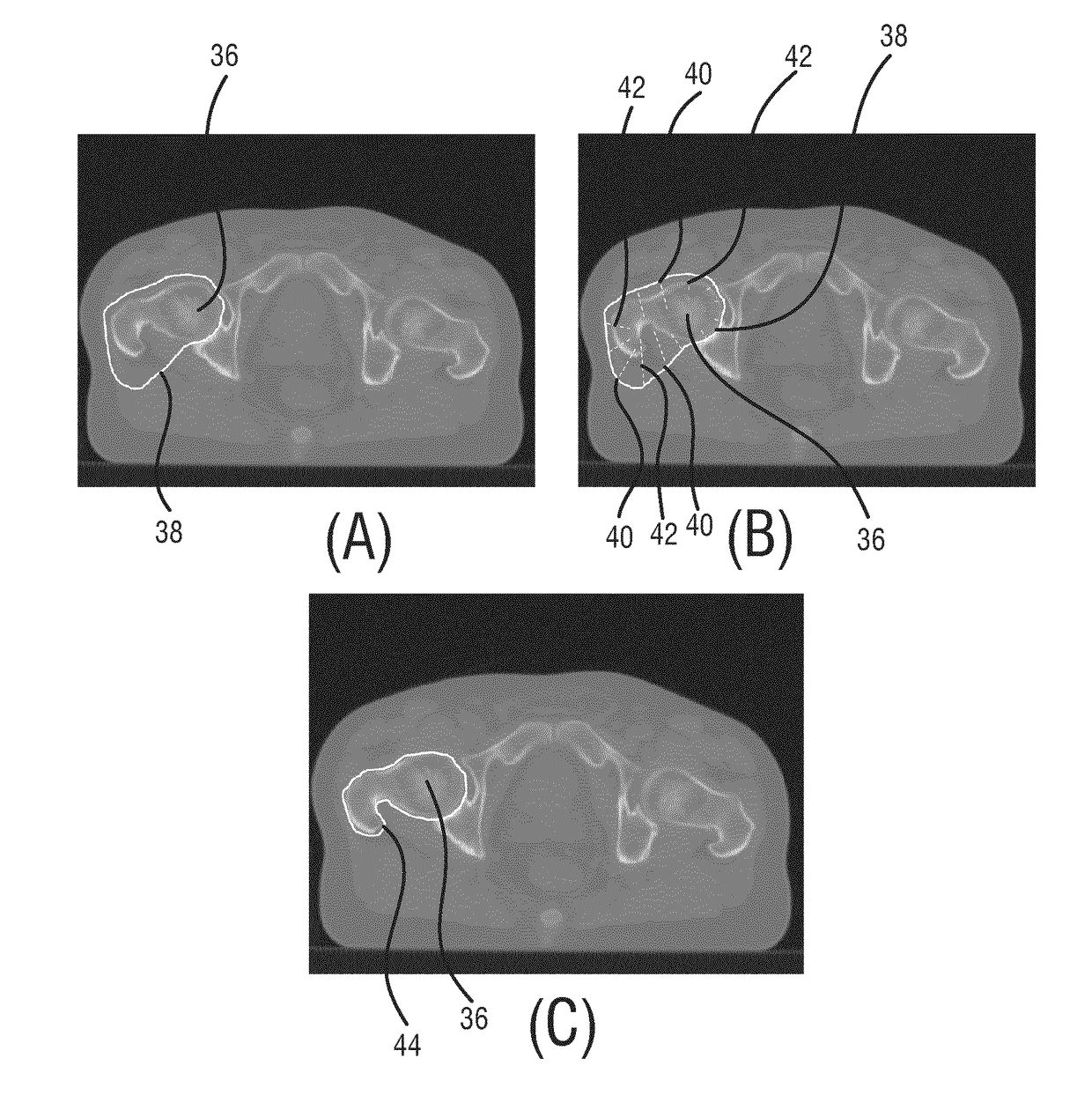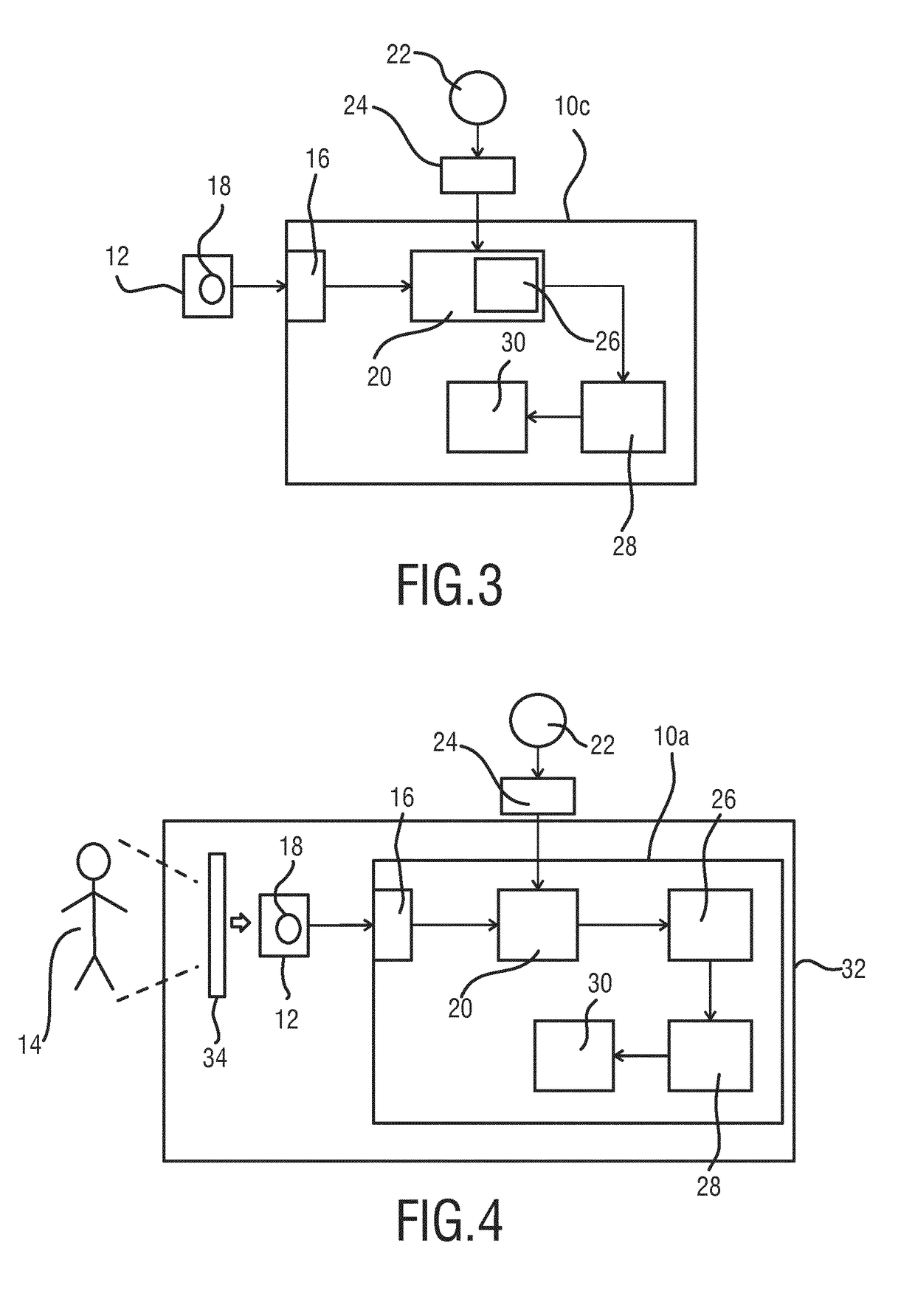Device, system and method for segmenting an image of a subject
a technology of image segmentation and subject, applied in the field of subject image segmentation devices, systems and methods, can solve the problems of difficult to achieve the technique, difficult to segment images, and difficult to achieve the effect of achieving the effect of improving the reliability of interactive image segmentation, increasing the efficiency of image segmentation, and increasing the accuracy of image segmentation
- Summary
- Abstract
- Description
- Claims
- Application Information
AI Technical Summary
Benefits of technology
Problems solved by technology
Method used
Image
Examples
Embodiment Construction
[0035]With reference to FIG. 1, a schematic block diagram of the device 10a for segmenting an image 12 of a subject in accordance with a first embodiment is shown. The device 10a comprises a data interface 16 for receiving the image 12 of the subject. The image 12 comprises a structure 18 which corresponds to a part of the subject. The subject is typically a living being such as a human, wherein the part to which the structure 18 corresponds may e.g. comprise an anatomical structure such as the lung, the brain, the heart, the stomach, etc. It is understood by the person skilled in the art that the structure 18 is enclosed by a boundary separating the structure 18 from the image content of the image 12 outside the structure 18.
[0036]The data interface 16 may be any type of data interface known in the art, in particular a data connection between an imaging apparatus to the device 10a. Such a data connection serves to transfer image data from the imaging apparatus to the device 10a for...
PUM
 Login to View More
Login to View More Abstract
Description
Claims
Application Information
 Login to View More
Login to View More - R&D
- Intellectual Property
- Life Sciences
- Materials
- Tech Scout
- Unparalleled Data Quality
- Higher Quality Content
- 60% Fewer Hallucinations
Browse by: Latest US Patents, China's latest patents, Technical Efficacy Thesaurus, Application Domain, Technology Topic, Popular Technical Reports.
© 2025 PatSnap. All rights reserved.Legal|Privacy policy|Modern Slavery Act Transparency Statement|Sitemap|About US| Contact US: help@patsnap.com



